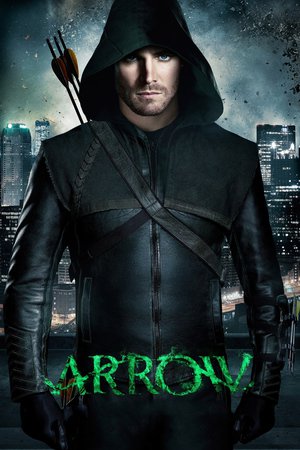The Hobbit: The Battle of the Five Armies is the final installment of Peter Jackson’s The Hobbit trilogy, based on J.R.R. Tolkien’s beloved book. The dramatic climax to Martin Freeman’s portrayal of Bilbo Baggins and the resolution of the bigger issues that have been brewing throughout the trilogy are found in this 2014 film. It succeeds in providing action and spectacle, but it also has issues with pace and emotional nuance. The narrative, action scenes, character growth, and visual accomplishments of the movie will all be covered in this review, along with its advantages and disadvantages.
Plot Summary
The narrative begins just after The Desolation of Smaug’s events. After attacking Lake Town, the dragon Smaug (voiced by Benedict Cumberbatch) throws everyone into disarray. Luke Evans’ character, Bard the Bowman, steps up to the plate and kills Smaug, sparing the village but leaving the treasure horde in the Lonely Mountain exposed. After Smaug leaves, a number of groups, including dwarves, men, orcs, goblins, and elves, gather to Erebor in an attempt to take share of the enormous riches therein.
The dwarven chieftain Thorin Oakenshield (Richard Armitage) gives in to “dragon sickness,” a type of greed that impairs his judgment and causes friction with his comrades. In an attempt to stop a conflict from breaking out, Bilbo even goes so far as to surreptitiously hand up the Arkenstone, a priceless jewel, to the opposing side. But Thorin’s obstinacy causes the unavoidable Battle of the Five Armies, where the various forces engage in a huge, catastrophic conflict.
The movie revolves around the battle, which has intense fighting and poignant scenes. Thorin ultimately proves his mettle by making a valiant last fight against the orc chieftain, Azog. After his adventures, Bilbo goes back to the Shire and is never the same.
Themes and Central Conflict
Greed and Its Consequences
A major theme in The Battle of the Five Armies is the destructive nature of greed, particularly embodied by Thorin Oakenshield. Thorin’s obsession with the treasure of Erebor and the Arkenstone drives him to paranoia and isolation. His once noble quest to reclaim his homeland transforms into a selfish desire to hoard wealth, causing division among the dwarves and tension with their allies. Thorin’s arc of redemption in the film is one of its emotional highlights, as he eventually realizes the futility of his greed and dies a hero, sacrificing himself in battle.
The Corruption of Power
The film also touches upon the corrupting influence of power. Thorin’s “dragon sickness” mirrors how unchecked power or wealth can lead to moral decay. His growing distrust of even his closest friends highlights the film’s message that power, when sought for selfish reasons, can erode relationships and values. His descent into madness is paralleled by Smaug’s own obsession with the treasure, showing how both heroes and villains can fall prey to greed.
Bilbo’s Personal Growth
Bilbo’s character arc is central to the film’s thematic core. By the end of The Battle of the Five Armies, Bilbo has transformed from a timid hobbit into a brave and resourceful individual. His role in attempting to broker peace, and his willingness to stand up to Thorin, demonstrates how much he has grown throughout the trilogy. His return to the Shire, where he quietly resumes his peaceful life, symbolizes how profoundly he has changed, despite returning to the same environment.
Action and Spectacle
The Battle
As the title suggests, the film’s main event is the sprawling Battle of the Five Armies. Peter Jackson, known for his epic battle scenes in The Lord of the Rings trilogy, once again delivers a spectacle of grand proportions. The battle sequences are visually impressive, with a blend of large-scale combat, intricate one-on-one duels, and moments of high drama. The use of CGI and practical effects creates an immersive experience, with a wide range of creatures—from orcs and goblins to giant bats—participating in the fray.
However, the battle takes up a significant portion of the film’s runtime, leading to a pacing imbalance. While visually stunning, the prolonged focus on action detracts from the emotional and character-driven moments, which could have been explored more deeply. The sense of urgency and tension that defines the best battles in The Lord of the Rings feels somewhat diminished here, as the sheer length of the fight scenes can become overwhelming.
Thorin vs. Azog
The final confrontation between Thorin and Azog serves as the climax of the battle. This duel, fought on a frozen river, is a highlight of the film, combining intense choreography with emotional stakes. Thorin’s redemption is completed in this moment, as he faces his nemesis with courage and sacrifice. The fight is well-executed and provides a fitting end to Thorin’s character arc. Azog, while a somewhat underdeveloped villain, serves his purpose as a physical and symbolic embodiment of the danger facing Thorin and his company.
Character Development
Bilbo Baggins
Bilbo, played once again by Martin Freeman, is the heart of the film. Freeman’s performance brings a much-needed emotional anchor to a movie dominated by action. Bilbo’s bravery and cunning are on full display as he navigates the treacherous political landscape between the various factions. His love for Thorin, despite Thorin’s descent into madness, adds depth to their relationship, and Bilbo’s anguish during Thorin’s final moments is one of the most emotionally resonant scenes in the film.
Thorin Oakenshield
Thorin’s journey from hero to anti-hero and back to hero is the most compelling arc in The Battle of the Five Armies. Richard Armitage captures the torment and internal conflict of a man who is slowly losing himself to greed and power. Thorin’s fall into “dragon sickness” is heartbreaking, as it drives him to alienate those closest to him. However, his ultimate redemption, when he recognizes the error of his ways and sacrifices himself in the battle, brings his arc to a satisfying conclusion. His death scene, shared with Bilbo, is a touching and poignant moment that underscores the film’s emotional weight.
Bard the Bowman
Bard, portrayed by Luke Evans, emerges as a strong and noble leader in the absence of Thorin’s leadership. His role in killing Smaug and defending his people from the subsequent conflict elevates him to a heroic status. While Bard’s character does not undergo significant development in the film, his steadfastness and bravery provide a solid foundation for the story. His leadership in rallying the men of Lake-town in the face of overwhelming odds serves as a contrast to Thorin’s internal struggle with greed.
Visual Effects and Cinematography
As expected from a Peter Jackson-directed film, The Battle of the Five Armies excels in visual effects. The CGI is impressive, particularly in the rendering of Smaug, the vast armies, and the fantastical creatures that populate the world. The landscapes of Middle-earth, as captured by cinematographer Andrew Lesnie, are breathtaking, blending New Zealand’s natural beauty with digitally enhanced settings like Erebor and Dol Guldur.
However, some moments feel over-reliant on CGI, particularly during the large-scale battle scenes. While the visuals are undeniably stunning, the sheer volume of digital effects can sometimes overshadow the human drama at the heart of the story. Nonetheless, the film remains a visual feast, with moments of awe-inspiring beauty and spectacle.
Conclusion
The Hobbit: The Battle of the Five Armies delivers on its promise of action and spectacle, concluding the trilogy with a grand and epic battle. While the film is visually impressive and features strong performances, particularly from Martin Freeman and Richard Armitage, it is not without its flaws. The pacing is uneven, with too much focus on extended battle scenes at the expense of deeper character development. Despite this, the film succeeds in capturing the themes of greed, friendship, and redemption, and provides a fitting conclusion to Bilbo’s journey.
Overall, The Battle of the Five Armies may not reach the same heights as Peter Jackson’s The Lord of the Rings trilogy, but it remains an entertaining and visually spectacular film. It offers a satisfying resolution to The Hobbit trilogy, tying together the various plotlines and character arcs in a way that will appeal to fans of both Tolkien’s world and epic fantasy cinema.






